Tea and scones with butter and jam - it's a yummy Irish afternoon treat. When I'm in Ireland I can whip up a batch of scones in double quick time, and I'm guaranteed success every time.
Now, I make two kinds of scones. Irish raisin tea scones without buttermilk, or my granny's favorite Irish buttermilk scones.
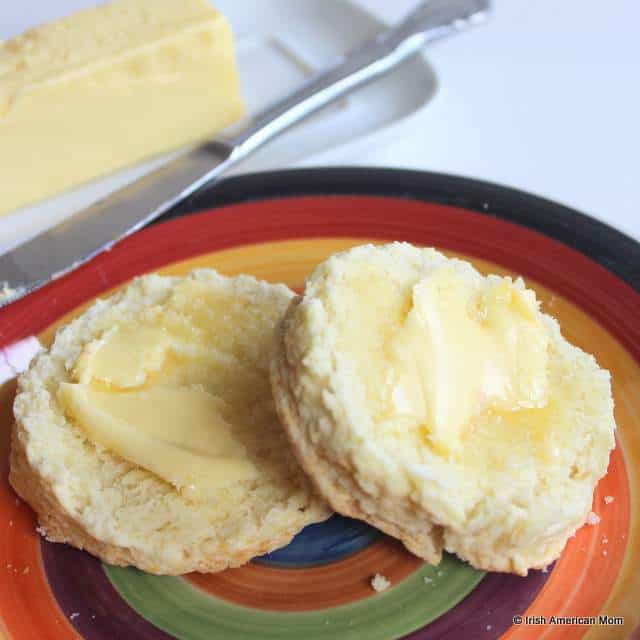
Table of Contents
Traditional Irish Scones Made with Buttermilk
Traditional Irish buttermilk soda scones used three simple ingredients, flour, baking soda and buttermilk. No eggs, no butter, just a simple dough which rose to tender perfection when cooked over an open fire in a cast iron bastible.
But alack and alas, scone making in America is not as simple. I thought I could take this age old Irish recipe and make lovely scones like my granny did with these three simple ingredients.
Believe me, I've tried, and all I created was tough-as-old-boots, tooth-cracking, hockey pucks you couldn't even inflict upon the poor dog.
I come from a long line of scone bakers, and can wax poetically about tender, soft scones dripping with melting butter. You can't beat a wee bit of scone nostalgia from an Irish mom.
And since I lived in the American south for over 15 years I learned southern biscuit nostalgia runs just as deep as Irish scone nostalgia. Must be a southern Irish American thang, because let's face it, a good Irish buttermilk scone, is exactly like a perfectly tender southern biscuit.
I take great pride in my baking skills, but once I came to America I quickly learned not to toot my own horn about my scone making abilities. It took me quite a few years to discover what I was doing wrong, and rectify my baking mistakes by tweaking my family's old Irish recipes. I now feel confident to share them on the internet.
Before I share my recipe - let's review some important pointers I've learned along the way for baking perfect buttermilk scones or biscuits.
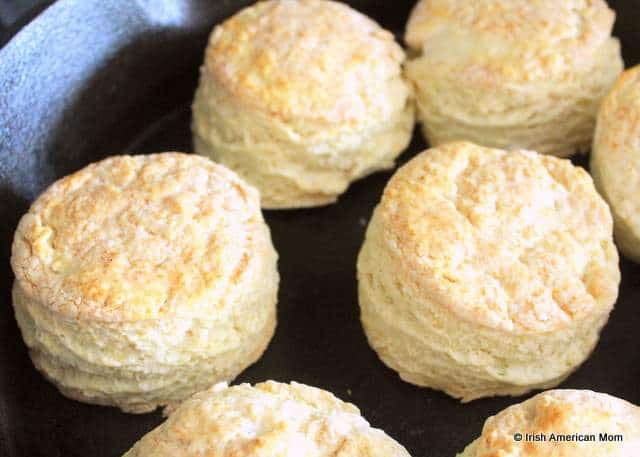
Flour
The best flour for making biscuits or scones is one ground from soft winter wheat grown in the southern states. White Lily is my flour of choice and luckily it's easily available here in Kentucky. This flour best resembles the soft wheat flour of Ireland.
Soft winter wheat contains less protein than the harder, more cold-resistant wheats from Illinois and Indiana, the grain belt of America.
So if you can, buy a flour ground from wheat grown in Tennessee. I know all the biscuit making experts from the south give two thumbs up on this flour choice.
Buttermilk and Fat
Years ago in Ireland soda scones and bread were made from authentic buttermilk, the curdy, acidic milk residue left behind after churning butter.
Today buttermilk is made by adding acid to regular milk and the fat content is not as high as the real buttermilk of years gone by.
Now my local grocery does not stock full-fat buttermilk. They only have the low-fat variety. I often wonder if dairies realize we don't drink the stuff, but use it for baking, and for lovely cakes, biscuits, scones, or buns, full fat is best.
I have a little trick to overcome this fatty shortcoming. I substitute some heavy whipping cream for buttermilk in most of my baking recipes.
Butter
Trying to make tender scones without any butter, while using today's American low-fat buttermilk just won't work. My motto is, the more fat the better for a tender scone or biscuit. Trust me, butter is needed to substitute for the less fatty buttermilk available today.
Some biscuit or scone recipes call for shortening and butter, some just shortening, some just butter. My buttermilk scones turn out best by using Kerrygold Irish butter.
Irish cows are grass fed, and dairy products like butter, made with their fatty, rich milk, are simply tastier in my opinion. Kerrygold is always my butter of choice for baking.
It's a little more expensive than American butter. Actually it's a lot more expensive, but for this Irish girl it's well worth splurging on Irish butter for my Irish baking recipes.
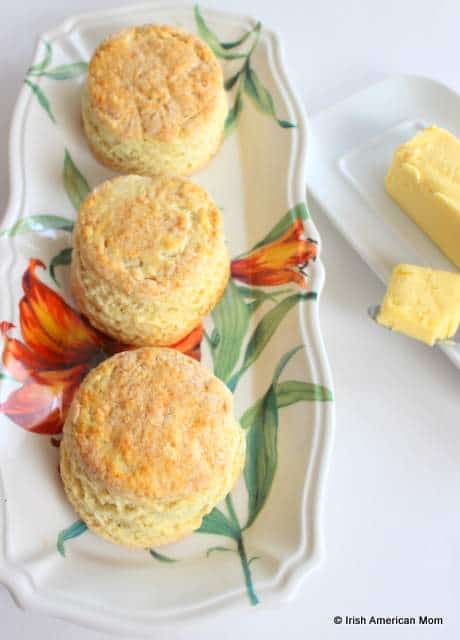
Leavening Agent
My granny simply used baking soda for her scones, but in today's world I find it best to use a combination of baking soda, baking powder, and cream of tartar.
If you wish you can use self-rising flour and eliminate the baking powder, but baking soda is needed to combine with the acid of the buttermilk for scone rising power.
I also use a teaspoon of cream of tartar. It helps to activate the baking soda a little faster to help my scones rise.
And so, here's my recipe for Irish Buttermilk Scones. This one might even qualify as a Southern Buttermilk Biscuit recipe ...

Ingredients for Irish Buttermilk Scones
Here's a quick ingredient list. Check the printable recipe at the end of this post for both US and Metric measurements.
- all-purpose flour (preferably White Lily)
- sugar (add a little more if you like sweet scones or biscuits)
- salt
- baking soda
- cream of tartar
- baking powder
- butter
- low-fat buttermilk
- heavy whipping cream
- melted butter (to brush the tops of the scones)
Directions for Irish Buttermilk Scones
Pre-heating the oven is extremely important when baking scones, so set your oven to 425° F before you get started. A really hot oven is needed to ensure your scones will rise.
I like to cook my scones in a large cast iron skillet. It's the closest thing I own to the old iron bastible my grandmother used for her baking.
So, grease a large 12 inch cast iron skillet with butter. You can using a baking tray if you don't have a suitable skillet.
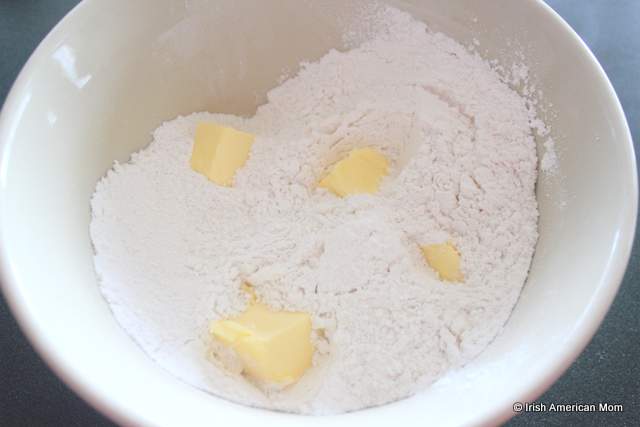
In a large mixing bowl sift together the flour, baking powder, baking soda, cream of tartar and salt.
I never skip this sifting step. Sifting helps add air to the flour and makes the end product a little lighter.
Cube the butter and add to the flour. I use cold butter out of the fridge.
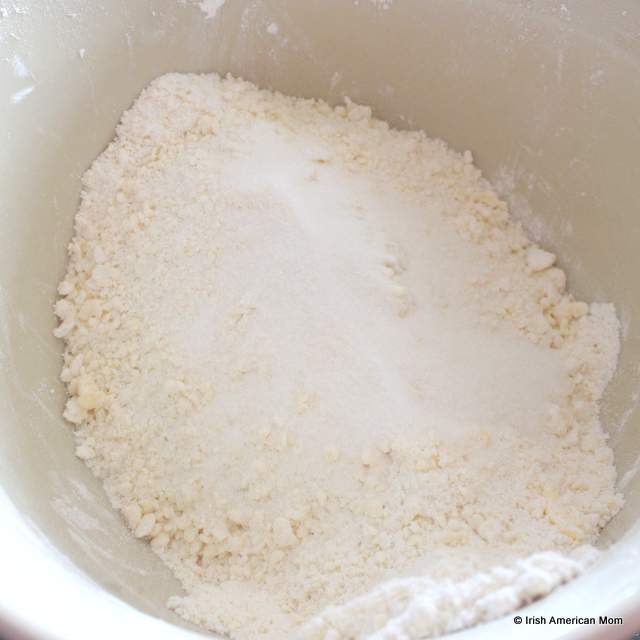
Using your fingertips or a pastry cutter, rub the butter into the flour until the mixture resembles fine breadcrumbs.
I just can't help myself - I always dig in with my fingers rather than use a pastry cutter. Here's a little confession - I don't even own a pastry cutter. I just do it the old fashioned way.
Add the sugar and mix together with the rest of the dry ingredients.
I merely use a tablespoon of sugar, since my kids like their scones a little sweet. I think they've had a few too many Cracker Barrel biscuits, because they won't eat my biscuits without a hint of sugar.
My granny didn't use any sugar in her scones, so feel free to sweeten or keep unsweetened to your own liking.
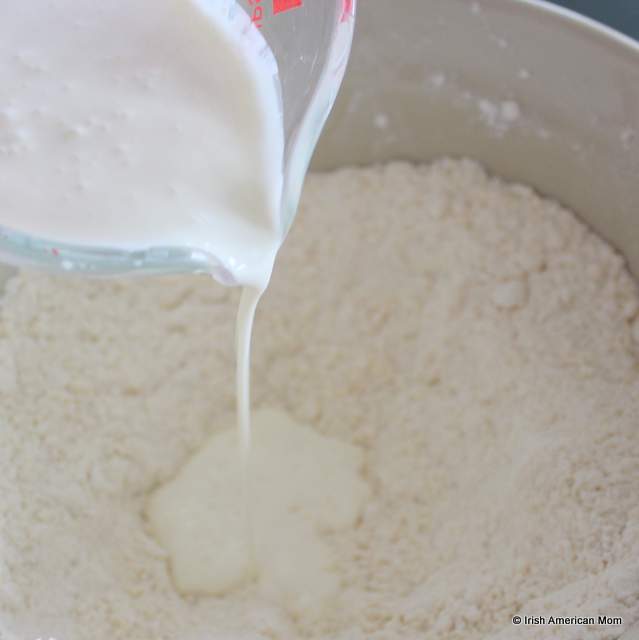
Combine the buttermilk and heavy whipping cream. If you're making these scones in Ireland, there's no need to use heavy whipping cream. You can use buttermilk only, since it usually is the full fat variety. But in the good ol' USA I recommend using a little cream for a tender scone crust.
Add the buttermilk/cream mixture to the dry ingredients and combine until it just forms a dough. Usually ¾ cups of liquid works just fine, but sometimes you may need a little bit more to form a dough. The exact quantity is dependent on factors such as the humidity and altitude of where you are baking.
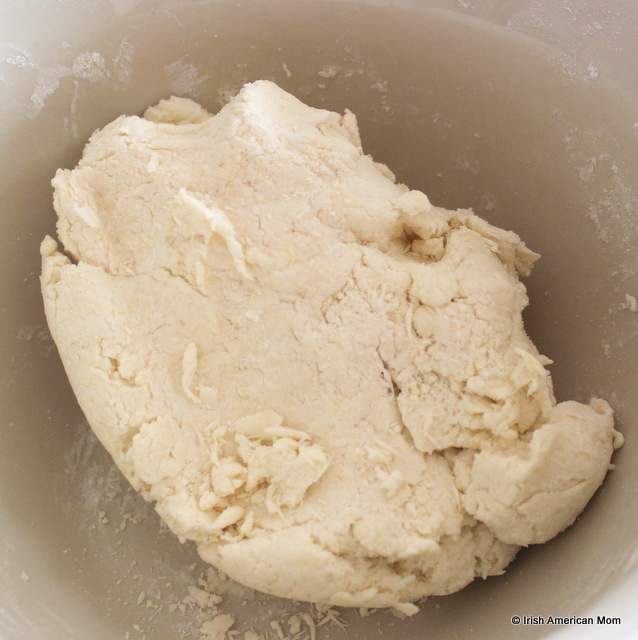
From the picture above, you can see that I like to form a dough that is a little less wet than the typical dough made by American southern biscuit bakers. I find this consistency yields scones that best resemble the scones of my Irish childhood.
Next, turn the dough out onto a floured work surface, and gently fold and pat to form an oval about ¾ inches thick.
Do not over knead your dough, or you'll end up with tough old scones. It's a folding and patting motion that smoothens the dough into a perfect oval.
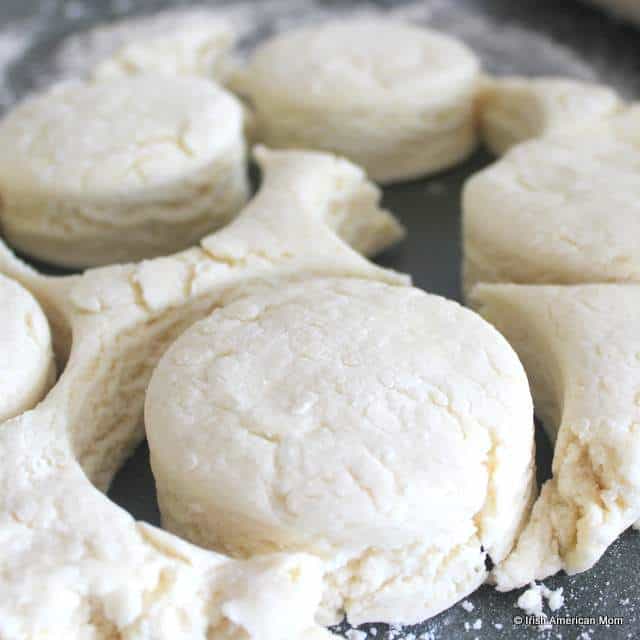
Cut rounds using a medium biscuit cutter.
Gather the dough scraps and gently knead to create a few more scones. Remember to handle that dough with care.
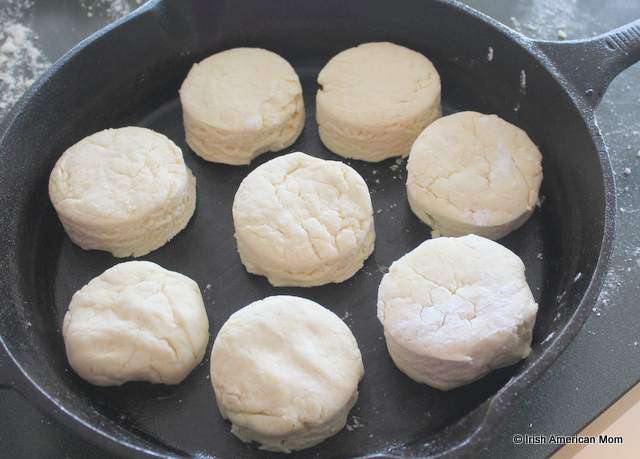
I use a medium sized cutter and this recipe yields 8 good-sized scones. If you like smaller scones use a smaller cutter, and bake for one to two minutes less.
Place the uncooked scones in the buttered cast iron skillet. Brush the tops with melted butter using a pastry brush.
If you like the sides of your scones to be soft, then place the scones close together. As they bake, the steam released from their surfaces will soften adjacent scones.

If you prefer you can cook the scones on a greased baking sheet, but I prefer how they turn out when cooked in a cast iron skillet. You can line the baking sheet with parchment paper for an easy clean up.
Bake for 12 to 15 minutes in a 425° F oven, until the tops and bottoms are a light, golden brown.

Cool slightly before serving warm with butter.
And there you have it, my tips, tricks and recipe for Irish buttermilk scones.
Printable Recipe Card and Video
Here's a short video outlining the steps for making these Irish scones.
This printable version of this recipe can be changed between American and Irish metric measurements. Simply click the tab you desire below the ingredient list.
Irish Buttermilk Scones
Ingredients
- 3 cups all-purpose flour preferably White Lily
- 1 tablespoon sugar add a little more if you like sweet scones or biscuits
- ½ teaspoon salt
- 1 teaspoon baking soda
- 1 teaspoon cream of tartar
- 3 teaspoons baking powder
- 4 ounces butter
- ½ cup low-fat buttermilk a few extra tablespoons if necessary
- ¼ cup heavy whipping cream
- 1 tablespoon butter melted to brush the tops of the scones
Instructions
- Pre-heat the oven to 425° F. Grease a large 12 inch cast iron skillet with butter.
- In a large mixing bowl sift together the flour, baking powder, baking soda, cream of tartar and salt.
- Cube the butter and add to the flour. Using your fingertips or a pastry cutter, rub the butter into the flour until the mixture resembles fine breadcrumbs.
- Add the sugar and mix together.
- Combine the buttermilk and heavy whipping cream. Add to the dry ingredients and combine until it just forms a dough.
- Turn out onto a floured work surface, and gently fold and pat to form an oval about ¾ inches thick. Cut rounds using a medium biscuit cutter. Gather the dough scraps and gently knead to create a few more scones.
- Place the scones in the buttered cast iron skillet. Brush the top with melted butter.
- Bake for 12 to 15 minutes in a 425° F oven, until the tops and bottoms are a light, golden brown.
- Cool slightly before serving warm with butter.
Nutrition Information is estimated based on the ingredients and cooking instructions as described in each recipe and is intended to be used for informational purposes only. Please note that nutrition details may vary based on methods of preparation, origin and freshness of ingredients used.
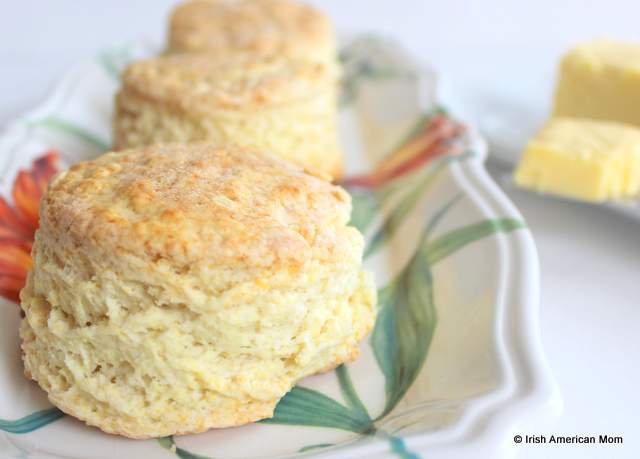
Happy scone baking to all my Irish and English readers, and anyone around the globe who uses metric measurements.
If you prefer an Irish scones recipe with raisins then why not check out my Irish raising tea scone recipe. They're made with regular milk and eggs instead of buttermilk.
I also have an Irish soda bread recipe with raisins.
Store the scones in an airtight container for up to 4 days. No need to place them in the fridge.
They can also be frozen in a freezer bag for up to 3 months.
Happy biscuit baking to my American readers. When they're baked and warm why not pour yourself a nice cuppa tea and sit down and enjoy your scones and tea for a true taste of Ireland.
Serve them slightly warm with butter, or butter and jam. Some people like a little lemon curd, and some like jam and clotted cream. The choice is yours.

Wishing everyone successful scone and biscuit baking. May your scones be tender and moist and delicious with butter, jam and a hot cuppa. Any variety of jam works well, but Irish favorites are strawberry jam, raspberry jam, black currant jam or blackberry jam.

Slán agus beannacht,
(Goodbye and blessings)
Mairéad -Irish American Mom
Pronunciation - slawn ah-gus ban-ock-th
Mairéad - rhymes with parade
Here are some other recipes and ramblings you might enjoy:
Bread, Muffins, Pancakes and Scones
Irish Soups And Stews
- Fresh from the Garden: Irish Parsley Soup
- Homemade Vegan Vegetable Stock Cubes
- Easy Cauliflower Leek Irish Soup Recipe
- Deliciously Hearty Beef Barley Stew
Irish Main Dishes
- Creamy Chicken And Mushroom Stuffed Boxty
- Cod and Parsley Sauce
- Leftover Turkey and Ham Rissoles
- Cheesy Seafood Bake


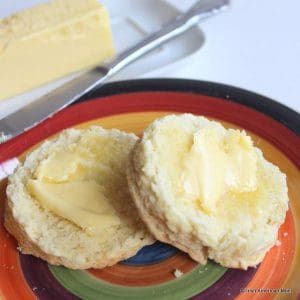




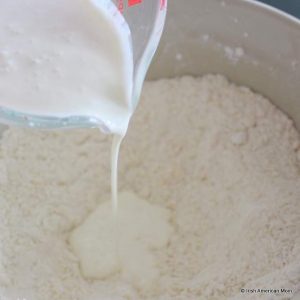

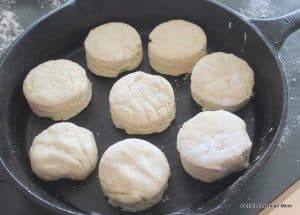
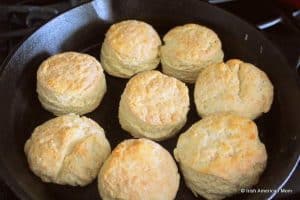
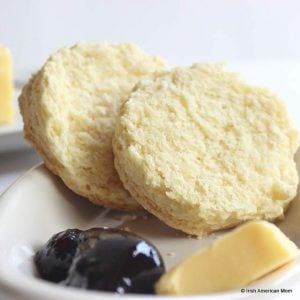

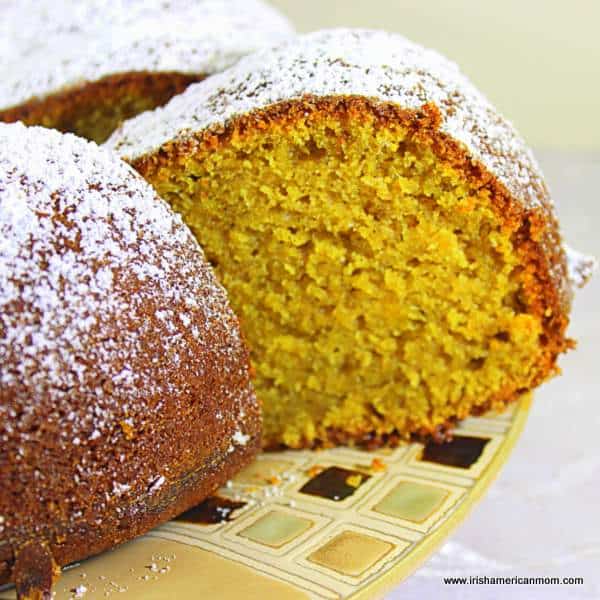









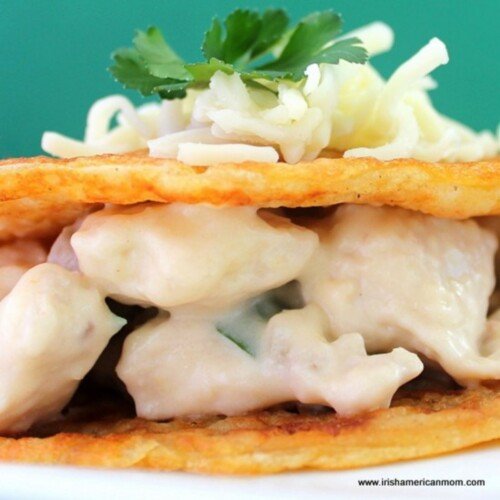



Mary
These look delicious. Others have recommended White Lily flour to me, so I'll have to give it a try.
Irish American Mom
I highly recommend White Lily flour for baking. Sometimes I use cake flour for sponges, cakes and my tea scones, but for other baking needs I always choose White Lily. I'm just lucky it is so easy to find here in Kentucky. Every supermarket seems to stock it in this neck of the woods.
Best wishes, and thanks for checking out my recipe.
Mairéad
Lou Judson
O my my... My Momma was from Mississppi, and HER mom made the best biscuits I ever tasted! But being raised in California, nothing quite like them has been here. And these sound just totally scrumptious - I get teary-eyed and mouth-watered just reading your loving recipe. Is it possible to get the proper ingredients sent to us here in Northern California? Are there online sources?
Or, is there any way to get them from local sources? I must have some, and my wife is a great baker - when she has time. O I am wanting to taste these desperately!
Irish American Mom
Hi Lou - I'm not sure if White Lily flour is available in northern California, but you might ask your supermarket if they can order it for you. Otherwise, I believe it is available online through the Smuckers store. Here's a link I found ...
https://onlinestore.smucker.com/display_category.cfm?cat_id=63
I hope this helps. There's nothing in the world like a warm scone or biscuit fresh out of the oven.
Best wishes,
Mairéad
irishnannie
mmm, Mairead*...mmm, mmm, mmm!!!
Thank you!
God bless you!
Irish American Mom
Thanks Irishannie.
Have a lovely weekend.
Mairéad
🙂 🙂 🙂
Penny Wolf
I see a baking marathon in my future! I would like to bake your scones, easy biscuits (just cream and White Lily self rising flour) from Natalie Dupree, and my own Mother's muffins, for a real side by side comparison. I'm not familiar with scones and they all 3 seem so similar.
Thanks as always!
Irish American Mom
Irish buttermilk scones and American biscuits are basically the same thing. Perhaps I should write a post about why cookies are called biscuits and biscuits are called scones in Ireland. Thanks for the inspiration.
All the best, and happy baking.
Mairéad
irishnannie
Oh, yum, Mairead*! Thank you so very much for this recipe. I loved reading about the changes you felt were necessary as a wife and Mom here in America!
My Family is going to love this! I have never really mastered scone-making, but I am optimistic after your careful guidance!
Irish American Mom
Hope this recipe turns out well for you, Irishannie. Baking scones is definitely not as simple as it looks.
All the best,
Mairéad
Pam Allen
Would you consider addressing the question of 'baking powder'. I am an American now living in Dublin. I understand that Irish (British/European??) baking powder is single acting where as American is double acting. I have bought/used Argo from Amazon to make sure my American baked goods work. I will try your Irish recipe (using plain flou, buttermilk and butter from a local Dublin market) with the Argo double acting baking powder
Irish American Mom
Hi Pam - Thanks so much for stopping by and joining in our baking discussion. Over the years I have found Irish baking powder and American baking powder are different. I tend to use a little more American baking powder in my recipes than I would the Irish variety to get the desired results. Irish baking powder is single acting, which for readers who may be checking out this post, means the leavening agent only reacts once when it gets wet. For that reason it's very important to work quickly to get your baked goods into the hot oven quickly when baking with Irish baking powder.
American baking powders are double acting, which means they work first when they are combined with the wet ingredients, and then react again when they are heated in the oven. I think the key to success with Irish baking powders is to work as fast as possible once the wet ingredients meet the dry.
Thanks so much for bringing up this very important baking tip.
Best wishes, and happy baking in Dublin.
Mairéad
Blake Elias
Irish scone is. The memory of those very first fluffy dream-cloud scones I had when I sat down to my first Irish meal is so strong that, to me, these are now the most true Irish scones.
Irish American Mom
Hi Blake - There's nothing like an Irish scone. Maybe some southern biscuits come close, but a cup of hot tea, with a hot buttered scone is simply delicious.
Best wishes,
Mairéad
Elaine Beacom
My husband came over from Fermanagh 8 years ago. I’ve tried making scones several times, but they just weren’t right. He says these are the real deal! Thank you, Mairéad!
Tiffany Watts
Yummy! Will try this soon 🙂
Irish American Mom
Thanks Tiffany. Glad you like this recipe for scones or biscuits.
All the best,
Mairéad
Matt
I made this recipe this morning. They are the best scones we have ever had. Better than the scones we had in Ireland. I followed the recipe exactly with the exception of using only buttermilk as I did not have cream. Happy St. Patrick's Day!
Irish American Mom
Hi Matt - Better than scones in Ireland - that's high praise indeed. Thanks so much for trying out my recipe and for taking the time to leave such wonderful feedback. I hope you had a lovely St. Patrick's Day.
All the best,
Mairéad
Ducklady
My US husband has been trying to make scones for weeks. My collection of Irish recipes have been of little help. We do have enough hockey pucks to get a team on ice, though.
We are so glad to have found your essay on scone making. I have baking powder, bread/baking soda and cream of tartar on hand but I'm out of practice. The buttermilk here in Ireland, alas, is also extremely low fat.
He's off to the shop to get more plain flour and cream. We'll let you know how the scones turn out.
Irish American Mom
I hope your scones will be a success. Sorry to hear the buttermilk is low fat too in Ireland now. Add a little cream to up the fat content of your scones - that might do the trick. Happy baking.
Mairéad
Tracey
Hello and thank you for this recipe! I lived in Ireland several years ago and fell in love with simple buttermilk scones with sultanas. I continued to bake them once I returned to America, but found they were simply not the same and gave up. In addition, I have health issues that make it necessary to live a gluten free lifestyle. However, lately I have been desiring that simple, yet beautiful, buttermilk scone. I read through many recipes online and appreciated your careful attention to the differences you have found baking in America, so I thought I’d try to adapt your recipe to create a gluten free version. Of course, there is nothing like baking with a soft white flour so, as usual, my expectations were low but my hopes were high. I did not have heavy cream on hand, so I used the total amount for liquid ingredients with the buttermilk only. I used C4C for the flour blend. This flour blend contains dairy, and since the recipe uses dairy, I felt free to use it. I used frozen butter and grated it into the sifted dry ingredients. I also added golden raisins to the dry ingredients. I did not add sugar. The dough was light. I cut out the scones and baked them on parchment since I did not have a cast iron skillet. I brushed with melted butter and sprinkled with a bit of sugar. Pulling the the scones out of the oven and found the scones I cut from the scraps had risen higher than those I first cut, which is unusual, but made me realize I did not need to be as careful with the dough as I though I needed to be and will knead the dough a bit more when I repeat the recipe with the heavy cream. This gluten-free version of your scone was quite good and my desire for a beautiful buttermilk scone was fulfilled! Thanks for you work on this recipe.
Irish American Mom
Hi Tracey - I'm delighted you tried this recipe and were able to tweak it so effectively to create a gluten free version of this taste of Ireland. I really appreciate all your great tips that will help other gluten intolerant readers adapt this recipe to meet their needs. You gave us great details for all your alternative steps - that's absolutely wonderful. Thanks again.
Mairéad
Sheila
This recipe is wonderful - my scones were soft and tender.
Irish American Mom
Hi Sheila - I'm thrilled to hear your buttermilk scones were a great success. Soft and tender scones are the best. Thanks for trying out my recipe.
All the best,
Mairéad
Deirdre Mc Intyre
Do you use your brown bread recipe for wholewheat scones or do you have a different recipe? I make a very good brown bread but am searching for a good healthy Irish ww scone
Dubliner Deirdre
Irish American Mom
Hi Deirdre - My brown bread recipe probably wouldn't work for whole wheat scones. The dough is very wet and I think scones would end up too crusty. You could try using this recipe and substituting 2 cups of the white flour with a combination of whole wheat flour, wheat germ and oat bran.
All the best, and happy scones making.
Mairéad
Ramsey
Delicious! Not as dense as a typical American scone recipe. Reminds me of my visits to Ireland. Thank you!
Irish American Mom
Hi Ramsey - I'm so glad you enjoyed this scone recipe. The texture is definitely different to an American scones. Thanks so much for adding a rating. I really appreciate it.
Best wishes,
Mairéad
Jenn Allen
These are lovely scones! So light, so flavorful. Thank goodness for your step by step photos - very helpful! I love these with a bit of jam. Yum!
Irish American Mom
Hi Jenn - I'm so glad you found the photo instructions helpful. Thanks for checking out this recipe.
Best wishes,
Mairéad
Lauren Vavala
These scones are amazing and pretty easy to make too. I love the tanginess and moisture from the buttermilk.
Irish American Mom
Hi Lauren - I'm so glad your scones turned out moist and flavorful.
Best wishes,
Mairéad
Beth
Wow! Mine turned out great and so delicious! The family was so pleased and so excited to try these! Definitely going to remake this recipe again soon.
Irish American Mom
Hi Beth - So glad your family liked these Irish scones. Thanks for taking the time to comment.
All the best,
Mairéad
Natalie
My family loves freshly baked homemade scones. This recipe is a bit different from how I make it. But sounds so delicious! I will def give it a try.
Irish American Mom
Hi Natalie - Great to introduce these Irish style buttermilk scones to readers. So glad you like this recipe, and thanks for the rating.
Best wishes,
Mairéad
Shashi
Oh wow! Your mile high scones are making my mouth water! I cannot wait to try them - maybe in scone shortbread with strawberries and whipped cream!
Irish American Mom
Hi Shashi - Strawberries and cream would be delicious with these scones. I love to serve them with fruit jam and clotted cream.
All the best,
Mairéad
Vicki
Just like grandmas thanks
Irish American Mom
Hi Vicki - So glad these scones remind you of your grandma's baking. Thanks for stopping by to check out my recipe.
All the best,
Mairéad
Margaret
This recipe looks easy enough for me to try!
Irish American Mom
Hi Margaret - That's good to hear. I hope your scones will be a great success.
All the best,
Mairéad
Sabine
I’m a bit late to this post but it brought me back to being a 6yr old, my Gran was visiting and couldn’t get her head around pasteurized milk—how do you get it to spoil a bit to make scones. My mom introduced her to buttermilk, which didn’t meet her standards but her scones were still delicious.
She made a wheat scone, any idea how you’d adjust this recipe for a wheat scone?
Ta!
Irish American Mom
Hi Sabine - Thanks for stopping by to rate this recipe. I really appreciate your support. Thanks for sharing your memories of your Gran, and her scone making dilemma with pasteurized milk.
To make a whole wheat scone I would replace half the white flour with whole wheat flour. It should work out fine.
All the best,
Mairéad
Irish American Mom
Thanks so much for linking to my site.
All the best,
Mairéad